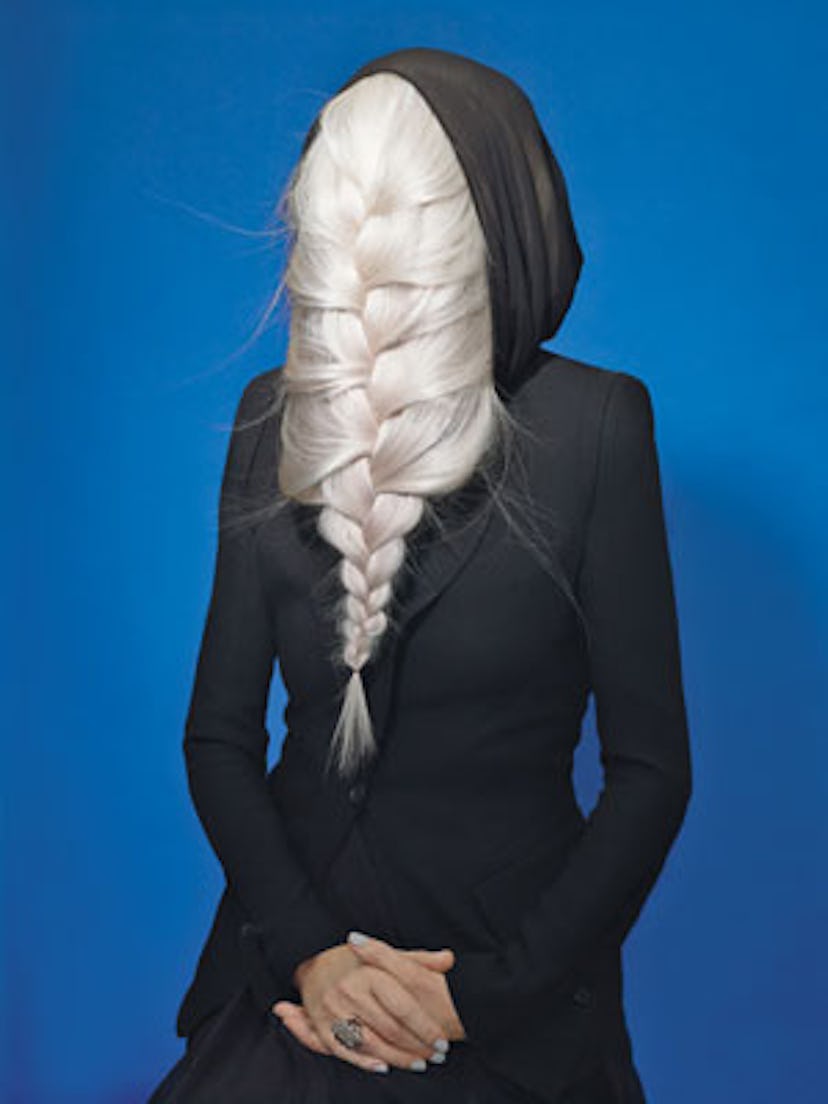Michele Finessi was applying oils to my scalp so gingerly that but for the slight tingle, I wouldn’t have noticed. “You feel a little fresh, yes?” he asked, referring to the eucalyptus in the cleansing oil, before massaging my head with the intensity of a faith healer. I’d signed up for Shu Uemura’s Art of Hair ceremony at the Rossano Ferretti salon in Beverly Hills—but whether this ritual was actually helping my feeble follicles was debatable.
Still, I needed the intervention: I’ve officially joined the growing population of women seeking treatment for “aging” hair. It all started on an elementary school tour last fall. Instead of listening to the advantages of Singapore Math, I found myself distracted by the back of the heads of three women in front of me. From any other angle they appeared young enough, suffering from only the usual parental fatigue. The view from behind, however, betrayed their lineless faces. The women’s hair—weak from overstyling and processing and naturally thinning a bit—was revealing their age. And then it occurred to me that people were standing behind me.
“Clients come in complaining that their hair is thinning at the part or the temples—or that the texture has changed as it’s gone gray,” says Santa Monica, California, dermatologist Karyn Grossman. “Women who are having children at an older age are finding that after postpartum hair loss, everything doesn’t quite come back. Then there’s also just regular genetic hair loss.” Though as someone who merely thinks her hair isn’t as shiny and pretty as it used to be, I was eager to scalp-test as many possible solutions to the problem as I could get my hands on.
First were the scalp-stimulating serums Phyto Phytolium 4 Thinning Hair Treatment and René Furterer RF 80 Concentrated Hair Strengthening Formula. They claim to increase hair production by boosting circulation around the follicles. I found them to be a bit like Stridex for the head—though because it takes months before you might notice any change, the jury’s still out. Temporary quick fixes—Furterer’s Tonucia No Rinse Densifying Mousse, which uses wheat proteins to bulk up individual strands, and Redken’s panthenol-infused Intra Force Hair Densifier—left me with a sticky, Donald Trump–ish texture, though they also seemed to lend my hair a heftiness it’s never achieved on its own. (Nota bene: Just because something worked—or didn’t—for me doesn’t mean it will do the same for you; everyone’s hair, aging or otherwise, has different needs.)
Philip Kingsley’s New York and London trichology clinics have been treating hair and scalps since 1960. “We’re the last place people visit,” says Elizabeth Cunnanne Phillips, a 20-year veteran of the practice. “Our patients will say, ‘I’ve been to the dermatologist, endocrinologist, my internist, and my gynecologist.’ What’s good for the body isn’t necessarily good for the hair, but when you improve the foundation—scalp, diet, internal health—you have a great chance of slowing down changes.” Kingsley’s Elasticizer—a pre-shampoo containing castor oil, elastin, and glycerine—added bounce and shine to even my most reluctant strands.
A wide array of leave-in treatments claim to restore sheen and pliability above the surface and promote follicular health below it. I tried B-vitamin-rich Phyto Phytodensium Serum and Alterna’s omega-3-packed Caviar Anti-Aging Photo-Age Defense serum. Both of these products made my hair look good on the most basic level—nothing wrong with that, of course—but for lasting results, the most promising thing for my fine, color-treated hair turned out to be Furterer’s Tonucia Redensifying Serum with vitamins E and B5, plant peptides, and lemon-balm extract. After using it twice a week for two months, my hair felt thicker and softer than it had in a decade.
Of course, hair health isn’t solely the domain of chemists: Egg yolks are a natural source of biotin—a B-complex vitamin that has been shown to promote hair and nail growth—while walnuts, almonds, and cashews contain omega-3s and zinc, known to help keep hair healthy. (You can find essential fatty acids in primrose and borage oils.)
After a great deal of trial and error, I settled into a routine of twice-weekly Tonucia serum applications, along with 2000 mcg of biotin supplements and 1000 mg of primrose oil daily. Two months into my experiment, my roots seem stronger and thicker. How my hair looks from the back, of course, remains something for you to know—and me to avoid finding out for a bit longer.
Hair by Tamara Mcnaughton for Shu Uemura Art of Hair; Makeup by Christine Cherbonnier For Diorskin at Atelier Management; Manicure by Gina Edwards for Chanel at Kate Ryan Inc; Model: Sigrid Rothe
